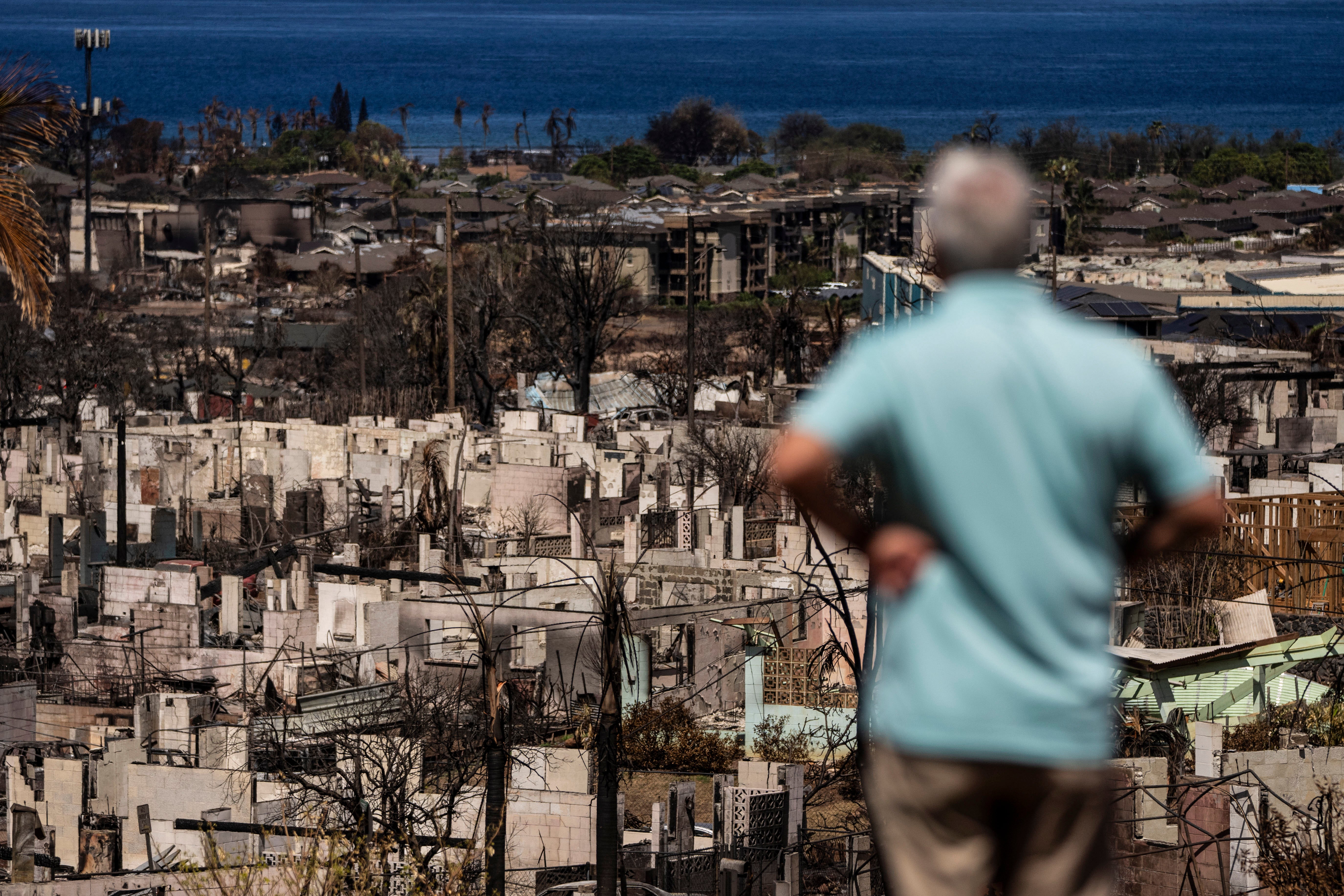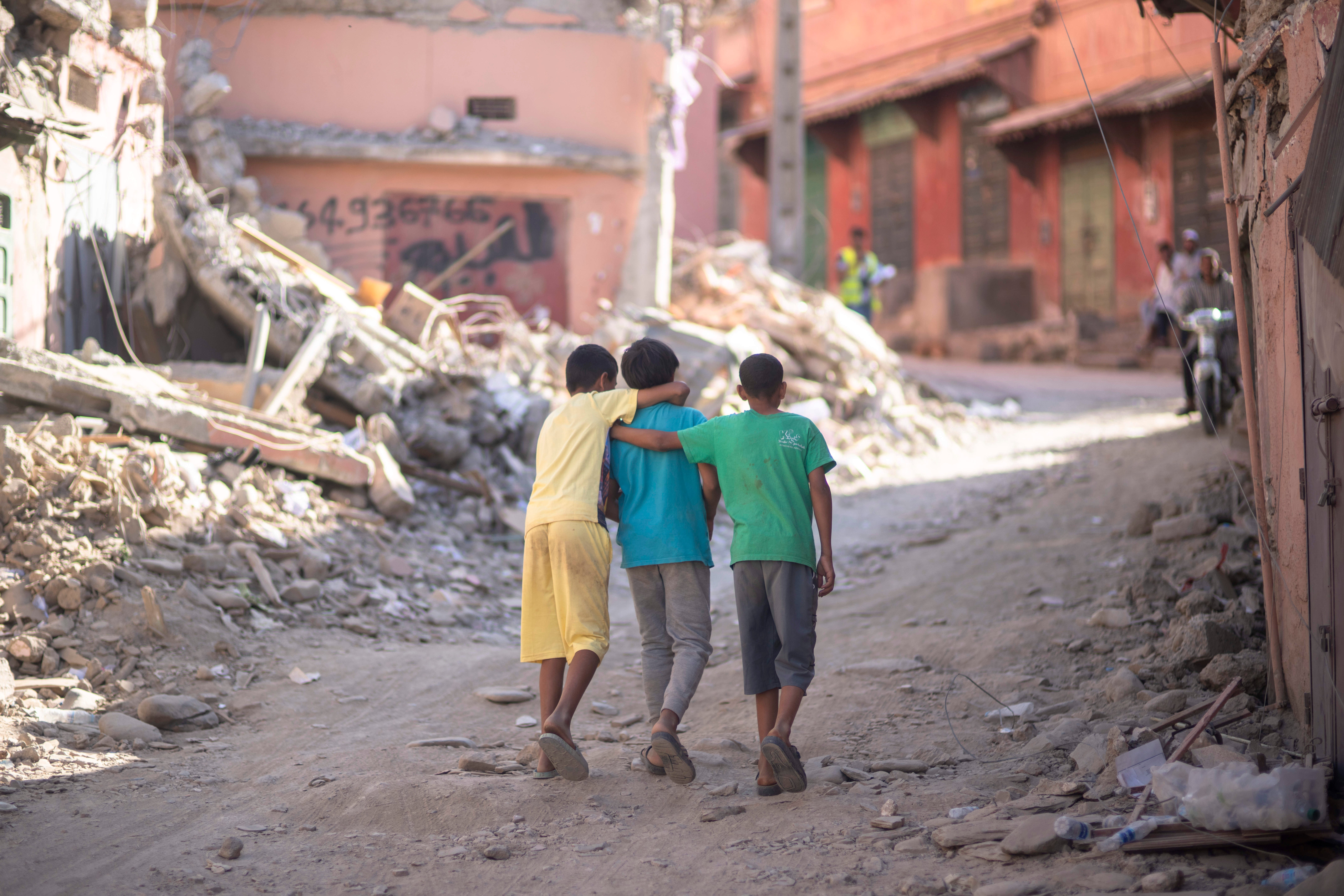How soon is too soon to visit a tourist destination after a disaster?
When a natural disaster like Morocco’s recent earthquake hits a holiday spot you were planning a trip to, the messages can be mixed. Should you stay away or do locals need your cash more than ever? Lucy Thackray investigates the dos and don’ts of ‘crisis window’ travel


When a fire ripped through the peaceful coastal town of Lahaina, on the Hawaiian island of Maui, this August, the immediate message to the world was clear: stay away. Aquaman star Jason Momoa and Moana actress Auliߵi Cravalho took to social media to spread the word. “Maui is not the place to have your vacation right now,” Momoa wrote. “DO NOT TRAVEL TO MAUI.” One council member for Lahaina’s region of West Maui did not mince her words. “We don’t want to be seeing people on vacation when we’re trying to pull our lives back together. I don’t care if you have reservations, now is not the time,” said Tamara Paltin on a Facebook Live broadcast.
In an age of one-slide, social-media-size news, where a photo of scorched earth or houses in rubble can spread across the world in minutes, nuance is easily lost. The truth is, Hawaii (and especially Maui) still needs tourists, a Hawaiian tourism official tells me, the issue is where they go and how they conduct themselves. The immediate reaction from locals stemmed from tourists wandering into the cordoned-off area of Lahaina, at a time when residents have not been allowed back to survey the devastation or the homes they lost. Many are mourning the 97 recorded dead. Some of the missing are still unaccounted for.
To understand the “stay away” message, says Ilihia Gionson of the Hawaiian Tourism Authority, you need to understand the visibility of tourists on Maui. “On any given day before the fires, there were about 70,000 visitors on the island, in a population of 160,000 residents,” he tells me. “Maui is a small community and the fires have touched pretty much everyone on the island.” It was vital that authorities focused energy and resources on controlling the fires, and rescuing and relocating displaced residents.

Alongside this period of mourning and recovery, however, are concerns about the economy and local businesses. Some venues and accommodations in West Maui, which remains a no-go area over a month on from the fires, are ready to open but with no customers. Some small business owners are weighing up cutting down hours, laying off staff or both. This region accounts for around half of the accommodation units on the island, some 11,000 rooms. “Imagine losing your home,” says Gionson, “then a few weeks later, losing your job.”
Morocco, meanwhile, was in the midst of a tourism boom when it was hit by a 6.8-magnitude earthquake on 8 September. “It’s an incredible success story after the pandemic,” says Zina Bencheikh, the Moroccan managing director (EMEA) of Intrepid Travel. As the death toll rose above 2,800 and heartbreaking images circulated of distraught residents and piles of rubble, the tourist board never went as far as putting out a “stay away” message. In fact, Intrepid only paused new arrivals into Marrakech for the four days after the event, with most Morocco tours going ahead as planned.
Sam Bruce of Much Better Adventures took the same stance. “It’s easy to forget how big Morocco is,” he explains. “We had trips that still ran in the aftermath, because it was deemed safe to. Some were starting 300km away from the epicentre.” The main disaster zone is in the High Atlas mountains, 70km from Marrakech – though the city sustained some damage around the Jewish Quarter, the Mellah. Some riads and hotels are still being checked for structural damage.
Continuing to go to Morocco is the right thing to do for Morocco
“I can understand that some people may feel uncomfortable going back straight after an event like this,” says Bruce. “But one of the best things we can do to help locals recover is to keep that sustainable income going.” Bencheikh agrees. “The reality is that most of the country isn’t affected; the damage is localised. Continuing to go to Morocco is the right thing to do for Morocco. They should check the travel advice – the FCDO, their tour operator – and if they say it’s safe to travel, they need to trust that.”
While there is a “crisis window” in which tourists can get in the way, industry experts say that it’s far shorter than we might think: days rather than months. The immediate priority is getting first responders out to the worst-hit areas – in these cases, West Maui and villages in the High Atlas – so arriving visitors could clog up vital roads. But once safe zones have been established, all say, tourism can help fund recovery efforts.
In destinations like Maui and Morocco, tourism is vital to the economy. Maui’s chamber of commerce says 40 per cent of jobs there are supported by visitor spending; in Morocco, 2.5 million people are estimated to work in the tourism sector, representing almost 25 per cent of the total workforce.

Rahul Aggarwal is all too familiar with the checklists a tour operator must run through after a disaster. His company, Travel the Unknown (TTU), was running tours to southeastern Turkey at the time of February 2023’s earthquake there, which caused more than 50,000 deaths. He’s also overseen trips to Lebanon after its (manmade) 2020 explosion and tours after the Moroccan earthquake.
“When the news is on, it’s rolling coverage of grim statistics and images,” he says. His first job is checking in with local guides and suppliers about the infrastructure, safe and unsafe zones, and the mood of residents in the area. After a full assessment, the company offers travellers a briefing on the situation in their destination, with opportunities to defer or cancel, though he always emphasises the positive impact of still visiting. “It’s important to convey to clients that these regions have been badly hit, and anywhere it’s not possible or appropriate to visit. But, in Turkey’s case, the message we got from our local partners was that by shunning the area you do even more harm.”
When early TTU groups did visit, they found grateful hosts and street vendors who thanked them wholeheartedly for coming. “Of course, the media has to cover these events,” says Aggarwal, “but I don’t think they realise how easily they write off a whole city or region with their coverage.” The city of Gaziantep, for example, was where most publications focused coverage of Turkey’s earthquake (in actual fact the centre was just southeast of Ekinözü, a more than three-hour drive away). “On one of our first tours back, we ended up in Gaziantep, and it was largely open for business,” he says. “It’s home to one of the most amazing mosaic museums in the world.” But, for many, ‘Gaziantep’ has come to represent where not to go; and tourists cancelled trips to areas hundreds of kilometres away, such as Istanbul or Antalya.
In Turkey’s case, the message we got from our local partners was that by shunning the area you do even more harm
Social media posts from celebrities and influencers can also lack the context for tourists trying to make an informed decision. Many see “Don’t travel” one week after a disaster, and end up putting the destination out of their mind for the foreseeable future. Gionson has mixed feelings about mainland-US celebrities becoming the voice of Maui’s disaster. “Some of the people who said ‘stay away’ were high-profile celebrities, not necessarily from Hawaii. Several have visited in the weeks since, spoken to folks on the ground and changed their message,” he says. “But the message ‘don’t come’ travels a lot quicker than ‘please come’.”
The etiquette outlined by industry sources on the ground is uniform: steer clear of any directly impacted area for the weeks afterwards, and keep updated on local authorities’ advice on where you can go (gohawaii.com has a page dedicated to Maui updates). Consider visiting other areas in order to help the country’s economy and aid recovery efforts. If you feel truly uncomfortable visiting in the aftermath, defer or postpone your trip, but still keep that destination in mind in the future.
Your choice of stops, tours and stays helps enormously. Staying in locally owned hotels and guesthouses, using local guides and eating in small restaurants all directly supports residents more than staying in an international chain hotel. Both Intrepid Travel and Travel the Unknown champion this sort of itinerary. Above all, says Aggarwal, “don’t presume to know what’s in the best interests of local people. Of course, they need time to grieve, but writing off tourism for several months or a year is extreme. Listen to what local people are saying.” In his dealings with both Turkey and Morocco, the main fear was that the whole of their country would be marked as “unsafe”, leading to a long-term tourism slump.

This fear isn’t unfounded. After Sri Lanka’s political crisis sparked protests in spring 2022, the island received only 194,506 tourists across the key seasonal months of December 2022 and January 2023 – less than half of the 470,097 arrivals in December 2019 and January 2020. Many of these destinations have only just rebalanced after the Covid tourism shutdown. Even well-meaning tourists diverting their trip from Marrakech to northern Morocco are missing an opportunity to help victims, says Bilal El Hammoumy of operator Inclusive Morocco. “Around two in every three people in Marrakech will have someone in the Atlas mountains relying on them for income,” he explains. Spending money there will directly help villages where tourists simply can’t go at present.
But what about the ghoulish feeling of taking selfies a few miles from areas still reeling from a disaster? If tourists visit with awareness and empathy, says Ilihia Gionson, they will be welcomed. When we travel, we should always be sensitive to the fact that we are guests in someone’s home, he reasons; but In the wake of a disaster, that sensitivity should triple. The mood across the island of Maui remains particularly raw six weeks on from the fires. Conversely, El Hammoumy has seen how early visitors to Marrakech have “lifted the spirits” of locals.
Tourists’ level of empathy and patience is far more essential than when they arrive, says Gionson. “One of the sentiments I’ve heard repeatedly is ‘Give people space’,” says Gionson. “That might look like not asking every person you meet if they’ve lost someone or know anyone who did.” Knowing that the next resident you meet may have lost a home, or a business. “Things like pulling over to the side of the road to take a photo of the burnt area from above? That’s offensive,” he feels compelled to clarify.
Go by all means, but go with your eyes open – and tread carefully when stepping into someone’s home.






Join our commenting forum
Join thought-provoking conversations, follow other Independent readers and see their replies
Comments